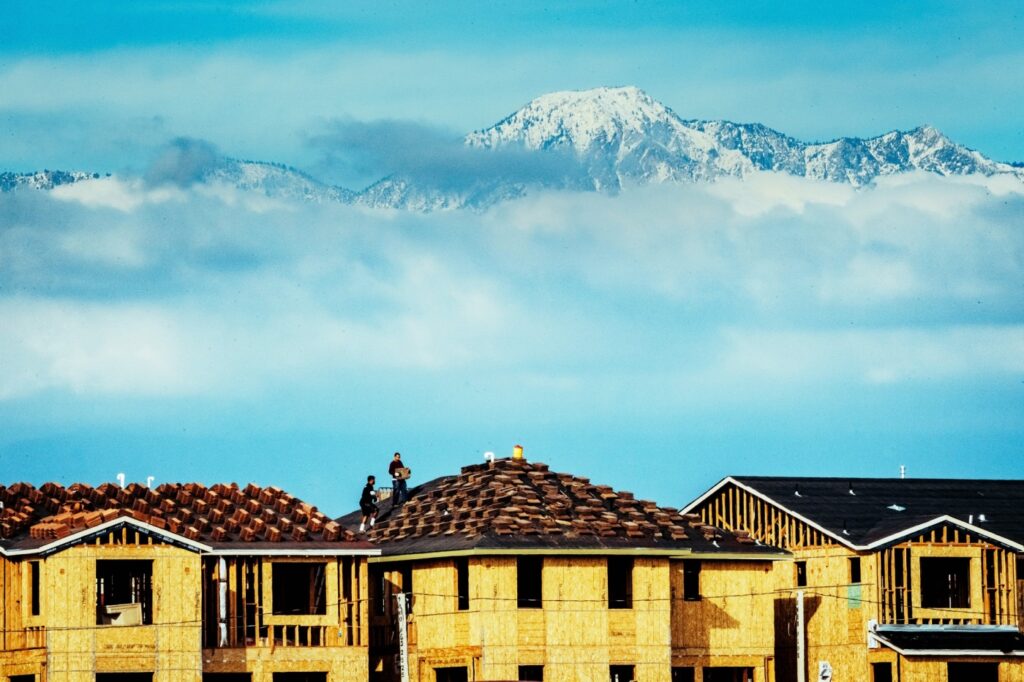
By Kenneth P. Miller | Inland Empire Economic Partnership
Have you thought of leaving California?
If so, join the club.
Recent polls by researchers at U.C. Berkeley (2019) and U.C. San Diego (2021) indicate that half of Californians have considered moving out of state.
And millions have already moved.
In 2020 alone, nearly 650,000 people left California for other states — about 210,000 more than moved to California from elsewhere in the U.S. This phenomenon of departures exceeding arrivals isn’t new. Every year since the 1990s, more people have exited California than have moved in from other parts of the country. Between 2007 and 2016, California lost a net 1 million residents to other states — with Texas, Arizona, and Nevada the top destinations.
Doesn’t this pattern seem strange?
The Golden State boasts one of the best climates, natural grandeur, a powerful economy, and incredible cultural amenities. Who wouldn’t want to live here? Who wouldn’t be drawn to a place where oranges ripen in midwinter, Beach Boys sing of endless summers, and Hollywood stars shine? Indeed, throughout its history, California has attracted millions of people from across the country and around the world.
During the 20th century, California’s population exploded from 1.5 million to 34 million, fueled by a combination of foreign immigration, natural increase (births over deaths), and massive waves of newcomers from other parts of the country.
But the pattern of domestic migration has now reversed — and, combined with declining birth rates and lower levels of foreign immigration, these exits have caused California’s overall population to stall at just under 40 million. In 2020, California’s population actually declined for the first time in its history.
California is quickly becoming like the state of New York, which has experienced domestic out-migration and slow population growth for many years. By contrast, Texas has replaced California as the nation’s fastest-growing (in numerical increase) and most popular destination state.
Why are so many people choosing to leave California?
Various factors contribute to decisions to move.
The leading factor is cost — it is far more expensive to live in California than in other places, and multitudes have decided they are unable or unwilling to pay the premium to live in this state.
Housing, of course, tops the list of expenses.
According to the Zillow Home Value Index (last updated in February), the median home value in California has increased to $669,000 — compared to $220,000 in Texas. For a lot of people, that single (enormous) difference seals the decision to move.
But other costs also drive decisions. A quick glance at the price of a gallon of gas, a utility bill, or a tax bill in California compared to Texas or other states makes one wonder whether the premium is worth paying.
Many also say they are prompted to leave by quality of life concerns. Although California is a natural paradise, it also is plagued by various forms of social disorder, including, in many places, crime, vandalism, and scandalous levels of homelessness. Others complain about the state’s political drift.
Ultimately, the decision comes down to a decision of whether California, or someplace else, is a better place to build a life, raise a family, or enjoy retirement. Often, people have voted with their feet and left the state.
Is this a problem? Some frankly believe California would be better off if it had fewer people. And perhaps a smaller population would ease some of the state’s issues of overcrowding and congestion. But a declining population presents its own challenges — and it’s certainly not ideal for those with deep ties to the state who feel like they’re being forced to leave.
Is there a way to help people stay?
The state’s inland region offers some hope.
California’s interior — and, in particular, the Inland Empire — occupies a space between coastal California and out-of-state alternatives. The region provides its residents the benefits of life in California at a lower cost than the coastal zone. And while the region is still more expensive than Arizona or Texas, it offers many advantages over those places.
Related Articles
Biden to announce new Russia sanctions while in Brussels
‘Class traitors’: Why rich millennials are getting rid of their wealth
Asian shares rise, eyeing Ukraine, inflation, energy costs
Stocks extend rally, notching biggest weekly gain since 2020
War in Ukraine casts a cloud over CSUF economic forecast
For example, the average July high temperature in Riverside is a relatively moderate 93 degrees compared to Phoenix, where it’s 107. And if you live in San Bernardino, you’re sitting below beautiful mountain resorts and only 60 miles from Newport Beach, while in Dallas you’d have to drive many hours to reach comparable places.
Based on these advantages, the Inland Empire need not match Phoenix, Dallas, Las Vegas, or Houston dollar for dollar. But it can’t rely on its geographical benefits alone. In order to compete with these and other out-of-state destinations, the region needs to provide middle class people what they’re obviously seeking: a good place to make a life.
That means affordability to be sure, but also high-paying jobs close to home, safe streets, first-rate schools, and attractive amenities that don’t require a drive to L.A. Providing that package is the Inland Empire’s great challenge.
Kenneth P. Miller, author of “Texas vs. California: A History of Their Struggle for the Future of America,” is director of the Rose Institute of State and Local Government at Claremont McKenna College, and an affiliate of the Inland Empire Economic Council.
The Inland Empire Economic Partnership’s mission is to help create a regional voice for business and quality of life in Riverside and San Bernardino counties. Its membership includes organizations in the private and public sector.
